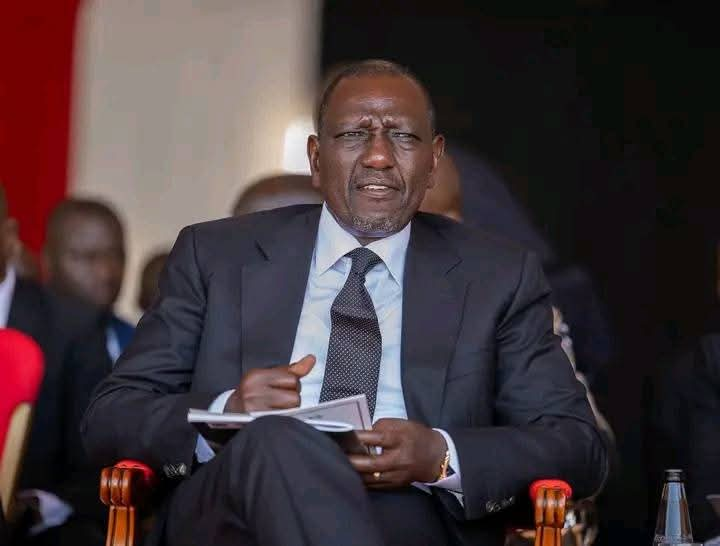By James Okoth
He stood among mourners dressed in black — the tailored suits, designer shades, and polished grief.
Yet Edwin Sifuna arrived in startling simplicity: a red unbranded, unironed T-shirt, light beige trousers, and a branded ODM cap tilted lightly over tear-drenched eyes.
It was a look that said little but meant everything.
In a crowd choreographed in ceremonial mourning, Sifuna’s outfit was rebellion in plain cloth.
Not rebellion against Baba, but against the theatre the funeral had become.
Where others came adorned for farewell, he came clothed in conviction — mourning a leader, not performing loss.
The red T-shirt glowed against the muted tones around him — raw, emotional, unfinished — just like the struggle Raila Odinga had left behind.
Unironed, it bore the wrinkles of truth.
Unbranded, it carried the honesty of purpose.
Red — the colour of courage, sacrifice, and the restless heartbeat of a movement unwilling to die.
When Sifuna rose to speak at Opoda Farm, the air thick with politics disguised as condolence, his T-shirt had already delivered the preface to his message.
He did not flatter, nor did he soften. He spoke as one who had walked with truth too long to pretend otherwise.
“If there’s one thing Baba taught us,” he began, his voice steady yet scarred by emotion,
“it is that the struggle must live beyond him. You don’t honour Raila by folding the flag; you honour him by raising it higher.”
The crowd stirred — unsure whether to cheer or stay silent.
Around him sat party dignitaries already embracing the new era of “broad-based government,” exchanging loyalty for relevance.
But Sifuna, dressed in rebellion and mourning at once, would not yield.
“We cannot pretend that the struggle ended with Raila,” he continued.
“It would be betrayal to turn ODM into a souvenir of the past. The movement must outlive the man.”
It was a brave sermon delivered in the temple of conformity.
And as his words cut through the polite applause, he stood there — the only man unarmoured by fabric or fear.
That red T-shirt was more than attire; it was metaphor.
In it was the residue of struggle, the hue of protest, the pulse of ODM’s founding fire.
It was the colour of unfinished revolutions — of nights spent in police cells, of rallies charged with purpose, of Raila’s unyielding political spirit.
His branded ODM cap crowned the defiance, completing a look that balanced grief with grit.
Together, the red and the beige spoke softly but firmly — that Sifuna came not to mourn the movement’s leader into silence, but to remind the living that silence is betrayal.
As one senior official whispered that Sifuna “was isolating himself from the new reality,” others saw in him the last echo of authenticity — the man who refused to let grief be used as a curtain for compromise.
When the speeches ended and the politicians drifted towards the marquees of power, Sifuna’s image lingered — the lone mourner in red, eyes swollen, shoulders straight.
He had dressed not for ceremony but for conscience.
He had mourned not in formality, but in truth.
His T-shirt was creased; his loyalty was not.
In a day drenched with scripted tributes and carefully measured tears, he remained the honest punctuation at the end of a long political sentence.
He mourned differently — and in doing so, he reminded Kenya that even rebellion can be reverent.
In the hours and days after the funeral, murmurs rippled through ODM’s inner circles.
Some senior figures, eager to align with the emerging “broad-based” government, hinted that Sifuna’s tone was “divisive” — even warning that his posturing could threaten his position as Secretary-General.
But for the younger wing of ODM — the idealists who grew up chanting “Chungwa Moja!” — Sifuna’s stand was not defiance; it was doctrine.
He had spoken what many whispered: that the party risked losing its soul while chasing seats at the high table.
Now, he stands at a dangerous intersection — between loyalty to the late Raila Odinga’s ideals and the pragmatic pull of survival in post-Raila politics.
If he bends, he keeps his title. If he holds, he may lose it — but gain history’s respect.
In the end, the red T-shirt may come to symbolise more than mourning — it may mark the rebirth of conviction in a party at risk of forgetting its colour.
For on that day in Opoda, Sifuna did not just wear red; he became it — bold, unyielding, and unwilling to fade.




